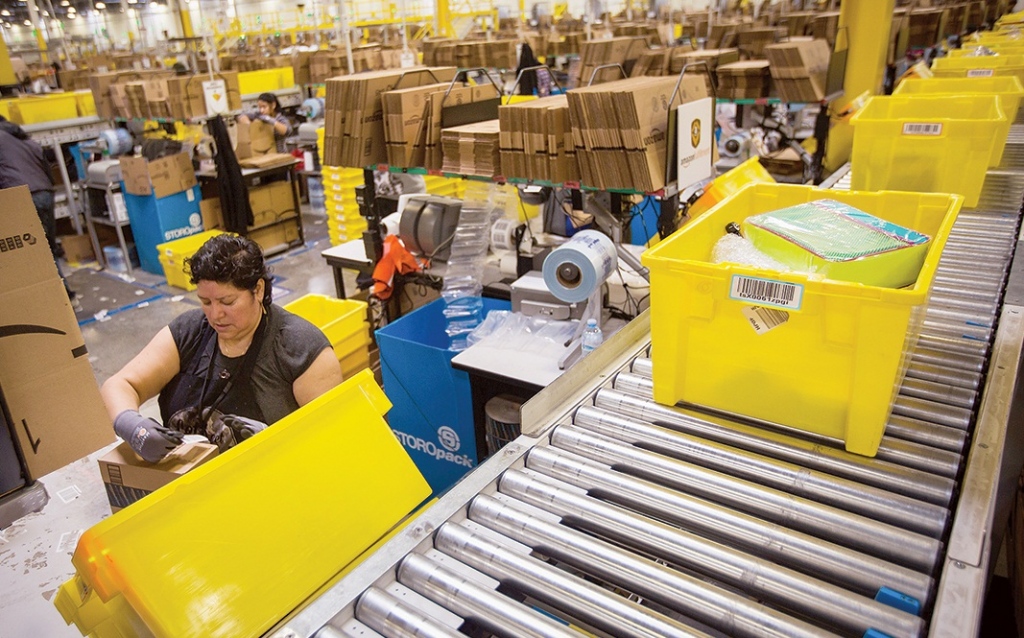Amazon Warehouse – The wonderland for those who are fascinated by logistics, robotics, and supply chain efficiency! An inside look reveals how the substantial and skillfully designed warehouses provide a modernized working environment which is the perfect blend of computer automation and human power – working together every day to deliver thousands of items to its customers. You will be quite amazed to see that, how the robots – small orange moving fellows assist their fellow human-workers, helps to maximize inventory, facilitates quick shipping, yet still keeps the overall cost at the price the customer wants to see. Even though most of the industry experts opined that these robots are pioneers of next-generation of warehousing operations in the E-commerce sector, however, few view them as the biggest threats to the firm’s human employees. In this context, let’s see how the robots and humans team up in Amazon warehouses to boost productivity.
The journey of Kiva Systems to Amazon Robotics
Being much keen on incorporating robots into their warehouses/fulfillment centers, Amazon acquired Kiva Systems (now, Amazon Robotics LLC) – a Massachusetts-based startup for $775 million in 2012 and focused on the advancement of its internal operations rather than attracting new customers and launching any kind of marketing activities. Today, thousands of robots (Kiva assets which work only for Amazon) have been employed in each of its warehouses capable of doing everything from picking to sorting, and further packing of the packages. Further, these platforms enable to store inventory in an appropriate manner as well as stew and pick up of some portions of that inventory at a faster rate.
How these in-house robots assist in internal operations?
Whenever the products enter the facility center, the staffers first scan each of the products, generate a virtual record and place the items in an inventory crate. With the help of these automatic circular orange robots, these products finally move towards the “picking” stations. When the customer clicks “order” option on the Amazon website, the “pickers” with the help of a computer monitor identifies the product’s location and pick the items off the shelves right away. From that location, the products move quickly across conveyor belts in the yellow-colored crate in the direction of the shipping area, where workers wrap items in suitable boxes and set them up for shipment. Ultimately, at the warehouse’s outbound area, these robots again assist in segregating the packages on the basis of delivery services such as FedEx, UPS, and even its own vehicles as well as sending to respective chutes.
Must Read: 3 ways AI will integrate with DevSecOps
Are the robots going to replace people in the warehouse?
Definitely not! Scott Dresser – Director of Software, Systems, and Solutions of Amazon Robotics once stated, “Associates and people in our builds are really good at finding where to put products in storage shelving. Systems are not good at doing that. We’re able to leverage the things that people are good for and leverage the things that systems are good for. We see that pattern playing out in a lot of different applications. We certainly see that being an augmentation to what people are doing and helping them be as efficient as possible with what they’re doing.”
However, a recent accident that happened in its Robbinsville Township warehouse has once again brought the employee’s safety issue to the public attention as more than 50 employees have been hospitalized after a bear repellant spray can has been punctured. Though the involvement of a robot has been suspected, the firm completely denied it. After this incident, the firm tried to explore many feasible solutions to ensure proper functioning of the robo-human alliance. Ultimately found the “Robotic Safety Vest” – a utility belt or jacket supported with a variety of sensors for the employees, which makes them more visible to the nearby robots. As per the firm’s officials, this RSV complements the technology that’s present in the robot drive system and is easily detectable by the nearby robots.
Usually, the robots carry the shelves around an enclosed space, where the entrance of the human employees has been strictly prohibited. In case, a robot drops any items or breaks down, the employees used to go into that area to sort out the issues while marking out the grid of cells where they would be working, which used to enable the robotic traffic planner to avoid any movement around that region. But now when an employee with RSV enters in the cordoned-off area, the robots at a distance slow down, while the ones in the immediate vicinity stop altogether, and smartly change their route plan. So, the employees can stroll off into the robot enclosure at any time they required without marking out a safe zone well in advance.
However, in recent days, the surge in E-commerce has made it inevitable to build an enormous network of warehouses and delivery systems that might include both robots and humans. As more people opt for online shopping, no doubt, these robots certainly will play a pivotal role in meeting that demand!
Author Bio: Vijay Chauhan is a technical writer at NexSoftSys. He specializes in topics related to computer programming like DevOps Services Providers India, Java, Big Data, Hadoop and CRM. Vijay has more than 8 years of work experience and has a basic knowledge in Computer Programming.
